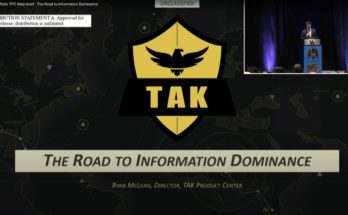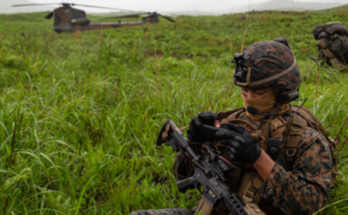DVIDS reports Naval Information Warfare Center (NIWC) Atlantic Small Autonomous Unmanned Systems Research (SAUSR) Range team demonstrated their newest swarming capabilities with ATAK during the Advanced Naval Technology Exercise (ANTX) East at Camp Lejeune in North Carolina July 9-19.

Swarming capability involves one or two pilots getting a flock of drones airborne to act autonomously as a team to carry out a mission. It’s a feat that requires a highly-skilled, multifaceted team of engineers and scientists.
“We’re on the forefront of developing these technologies for the Navy and Marine Corps,” said unmanned aerial systems (UAS) subject matter expert and SAUSR Range team lead Brad Knaus. “We can see from these exercises what the Navy needs when it comes to developing that technology. It gives us a sense of fulfillment that what we’re doing directly affects them,” he added. “That’s what always excited us about working with this technology.”
Integration of a plugin for an Android Tactical Assault Kit, a tablet-based program, is the most recent advancement in drone swarming control. The team also consolidated ground control station hardware to fit into a hard case by using some collapsible parts. That consolidation means less equipment and greater mobility — and therefore fewer warfighters — per swarm in theater.
The SAUSR Range team’s swarm technology now works in tandem with SPIDER SENSE, a low-cost, battery-powered, ad hoc wireless network of small form factor, modular, mission specific sensors for fusion of expeditionary cyber, radio frequency (RF) and physical situational awareness. Because of this integration, UASs can be used to deploy SPIDER SENSE sensor packages in the field.




